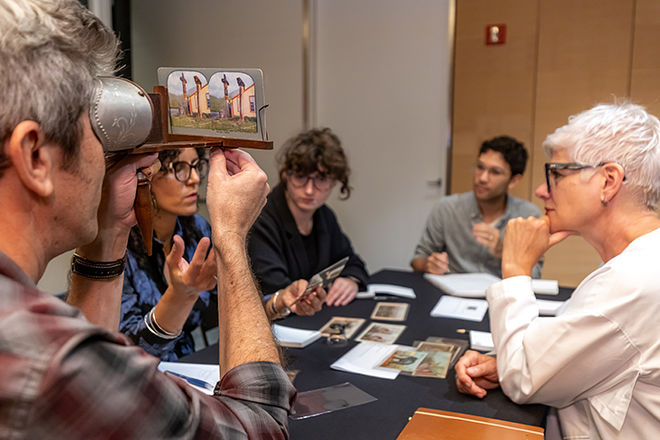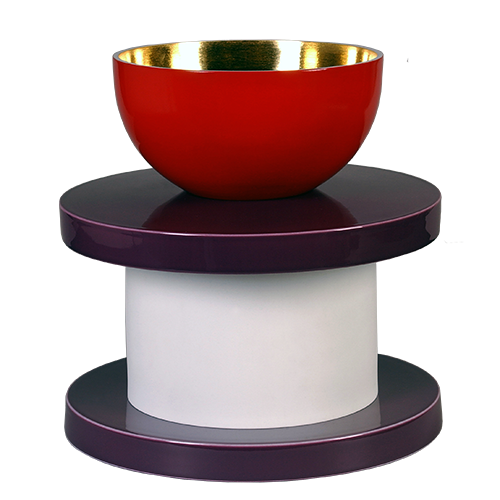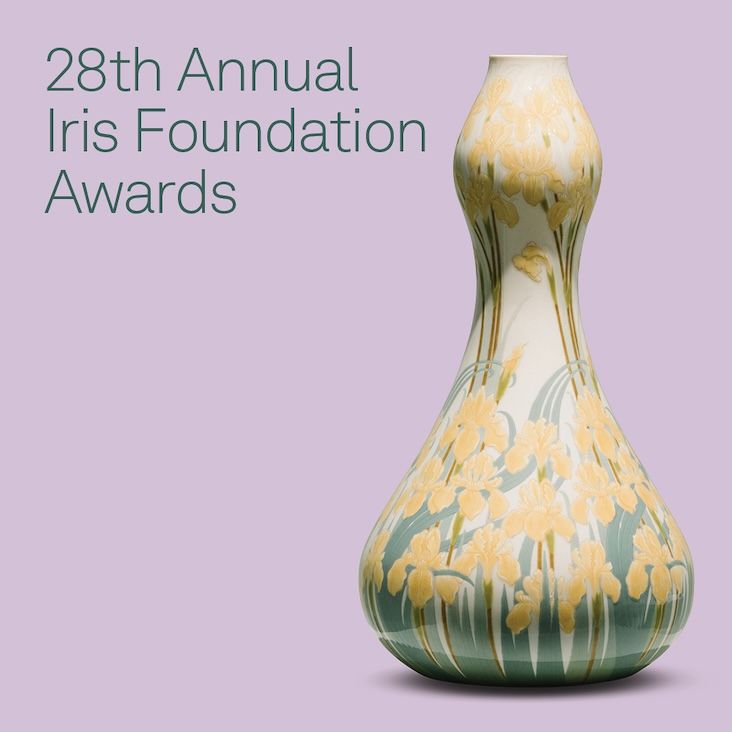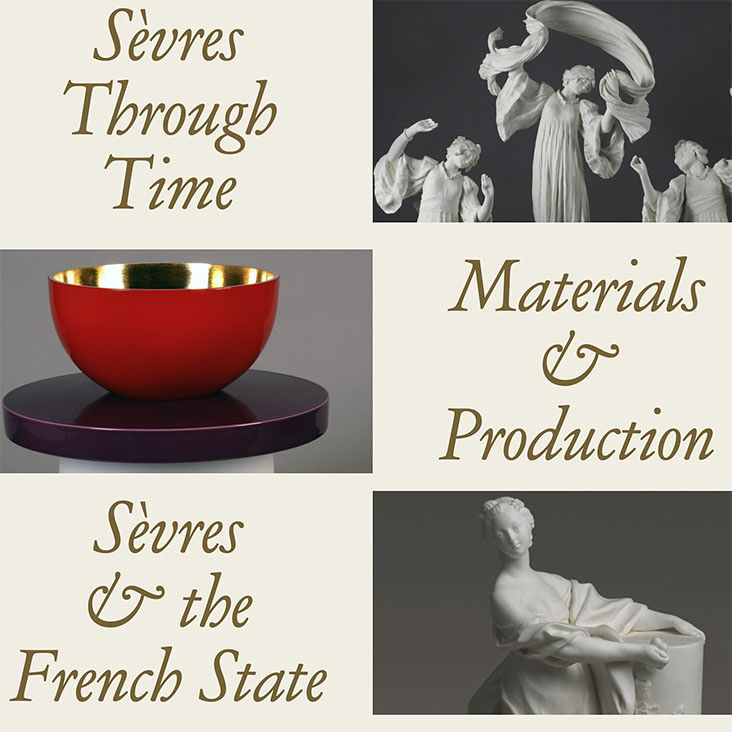From the Exhibition:
The Story Box: Franz Boas, George Hunt and the Making of Anthropology
Heraldic plaques known as Coppers (`tłaḵwa in Kwak’wala) are the currency
of highest value within the elaborate systems of hereditary wealth and potlatch
exchange along the North Pacific Coast. Whether maintained as lineage property,
exchanged in trade or marriage, or displayed ceremonially, a Copper represents
the prestige and ancestry of its owner (in the Haida language, they are called t’aa.u or “property above anything else”). A Copper
accrues value each time it is displayed, given, traded, or sold. Some of the
most important Coppers retain their own names—their oral histories typically
performed upon public presentation. Historically, an array of objects such as ritual
harpoons, wedges, cutting blocks, and cradles accompanied their ritual use in
Kwakwaka’wakw potlatches and other naming, marriage, and funerary
ceremonials.
This
particular Copper bears an incised, ancestral crest design—likely that of an
owl or a hawk—and is probably of Haida origin. Owing to the sparse
documentation of American Museum of Natural History (AMNH) objects collected between 1880 and 1885 by Israel Powell,
then Superintendent of Indian Affairs for British Columbia, little can be
definitively stated about this object. Powell’s single inventory in the
museum’s accession files documents the purchase of a “Hereditary Copper” at $30
but lists no place of origin. Based on
stylistic analysis, art historian Bill Holm and others have attributed this
Copper to the Haida. Following Haida convention, the piece is made of thick,
durable sheet copper featuring a convex upper portion decorated with an
ancestral crest motif. X-ray
fluorescence (XRF) analysis confirms it is of European manufacture after 1850,
and is painted with organic pitch. As symbols
of continuity within the strictly matrilineal social systems of both the Haida
and the Tlingit, Coppers were generally not broken and distributed, as they
came to be among the late nineteenth-century Kwakwaka’wakw . It may be
for this reason that in his 1887 catalogue notes for AMNH, Franz Boas mistakenly
identified this Copper as an “imitation” on the basis of its large size and
intact body. Up to
that point, Boas may have only seen smaller or broken Coppers, which he took to
be the norm.
A decade
later, in his 1897 monograph, The Social
Organization and the Secret Societies of the Kwakiutl Indians, Boas omitted
any reference to the Copper’s possibly inauthentic nature, suggesting his
increased understanding of Northwest Coast material culture by that time.
Illustrated in the chapter on the potlatch—which Boas describes as facilitating
complex systems of rank acquisition, chiefly rivalry, and wealth
distribution—the Copper appears without additional context as a photographic
plate captioned “Copper Plate with Design Representing the Hawk” (Fig. 1).
Boas
most likely interpreted the crest design as a hawk based on his early
diagnostic criteria that representations of hawk beaks are “drawn back into the
mouth, or merged into the face of the lower lip.”
However, George Hunt, Boas’s Indigenous research partner and an unheralded
co-author of the 1897 book, made notes in the early 1920s that amend Boas’s
caption with “Dᴇx·dᴇx·ᴇlagᴇɛmālɛā or owl on face, the name of the copper.” It is not
clear whether Hunt was generically identifying the crest image, which he
interpreted as an owl, or conveying the
specific
name of this particular Copper, presumably from personal knowledge of its
history and use. Hunt’s archival notes indicate that Haida Coppers were in
circulation among the Kwakwaka’wakw, signaling the active role of
Coppers in processes of inter-nation trade and cultural diffusion along the
Northwest Coast.
Much of the
history and interpretation of Coppers is indeed speculative. Although copper
deposits are distributed throughout British Columbia, extracting pieces
suitable enough to work into a large Copper would have been exceedingly
difficult. Imported European sheet copper was first introduced via the maritime
fur trade in the 1770s. The
material thereafter assumed variable exchange values across shifting trade
contexts. The
increasing availability of trade copper toward the end of the nineteenth
century resulted in a sharp price drop in raw material, prompting the
manufacturing of spurious Coppers for sale to unsuspecting collectors.
Regardless of fluctuating exchange values, the cultural significance of Coppers
also lies in their symbolism: all Northwest Coast societies ascribe an
ancestral, supernatural origin to copper. The color and luminous quality of the
metal are associated with light, salmon, and tongues—all symbols of life. Many
scholars have interpreted the highly conventionalized shape of Coppers as a
reference to the human body; the terms for a Copper’s elevated T-ridge and
radiating lines translate to “spine/backbone” and “ribs” in multiple coastal
languages. Such
versatility of meaning, use, and value is characteristic of much art on the Northwest
Coast, which prompted Boas’s emphasis on the dynamic diffusion of art forms and
their associated cultural practices throughout the region.
Sophie Swanson participated in Associate Professor Aaron Glass’s Fall 2017
seminar In Focus: Native Arts of the Northwest Coast. An MA candidate, she is Lead
Student Educator and Teen Program Coordinator at Bard Graduate Center.
Martine Reid, “The Equation of Copper,” in Donald M. Abbot, Marnie Duff, and British Columbia Provincial Museum, The Coppers of the Northwest Coast Indians: Their Origin, Development, and Possible Antecedents (Philadelphia: American Philosophical Society, 1989), 166.
Audrey Hawthorn, Kwakiutl Art (North Vancouver, BC: Douglas & McIntyre, 1979), 30.
Given that Powell seems to have amassed most of his collection among northern coastal communities during his 1881 trip aboard the HMS Rocket it is quite possible he acquired the Copper on Haida Gwaii. Peter Whiteley, “Notes on the Bishop-Powell Collection,” p. 2, acc. file 1869-90-94, Anthropology Archives, American Museum of Natural History, New York.
Carol F. Jopling, The Coppers of the Northwest Coast Indians: Their Origin, Development, and Possible Antecedents (Philadelphia: American Philosophical Society, 1989), 40.
Elemental analysis indicated copper electroplating, an industrial process introduced in Europe after 1850. Portable XRF analysis conducted by BGC Professor Jennifer Mass at American Museum of Natural History, New York, December 7, 2017.
Jopling, The Coppers of the Northwest Coast Indians, 40. For an example of a broken Kwakwaka’wakw Copper, see Aldona Jonaitis, ed., Chiefly Feasts: The Enduring Kwakiutl Potlatch (New York: American Museum of Natural History, 1991), 40.
Acc. file 1869-90-94, Anthropology Archives, American Museum of Natural History, New York.
Franz Boas, “The Decorative Art of the Indians of the North Pacific Coast,” in A Wealth of Thought: Franz Boas on Native American Art, ed. Aldona Jonaitis (Seattle: University of Washington Press, 1995), 65. Boas’s growing interest in diagnostic criteria is reflected in several articles published contemporaneously to the monograph that draw heavily on his work with the AMNH collections.
George Hunt, “Kwakiutl Materials.” Unpublished mss., 1920s, p. 1877. American Philosophical Society, Philadelphia.
George Hunt, “History of Twenty Coppers from Alert Bay, ” n.d. American Council of Learned Societies Committee on Native American Languages (Mss. 497.3.B63c), Item 44, p. 18. American Philosophical Society, Philadelphia.
The British Navy began lining ship hulls with sheet copper to protect the wood against sea worms and weed, thereby enhancing speed and maneuverability.
H. Kory Cooper, “Copper and Social Complexity: Frederica de Laguna’s Contribution to Our Understanding of the Role of Metals in Native Alaskan Society,” Arctic Anthropology 43, no. 2 (March 30, 2011): 153. Captain Liansky provides the first published description of a Copper in Sitka (Russian Alaska), where he records its price in 1804 as between twenty to thirty sea otter skins. Alexander MacKenzie, an employee of the Hudson’s Bay Company, recorded the value in 1878 at ten slaves or one thousand trade blankets.
Recent research by Aaron Glass indicates that the AMNH Copper (16.1/404), collected by G.T. Emmons in 1909, may actually be an imitation of Smithsonian National Museum of Natural History’s Tlingit Copper (20778), which Boas published in his 1897 monograph (p. 343, fig. 3). Whether Emmons was knowingly dealing in fakes remains speculative. These examples are featured in the exhibition.
Jopling, The Coppers of the Northwest Coast Indians, 120. Coppers were also ascribed curative powers linked to their perceived purity.
Reid, “The Equation of Copper,” 166.












